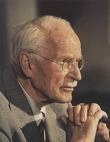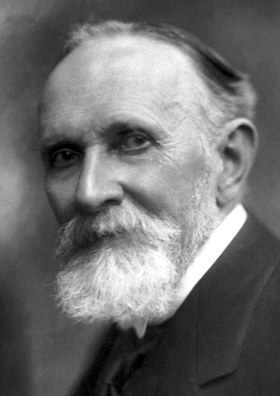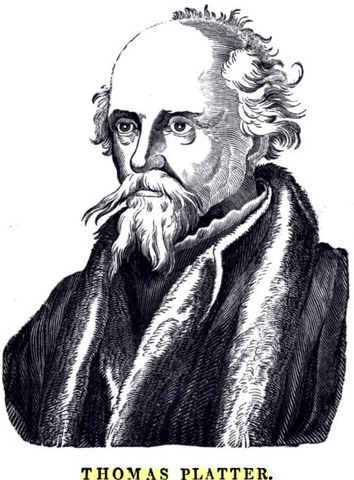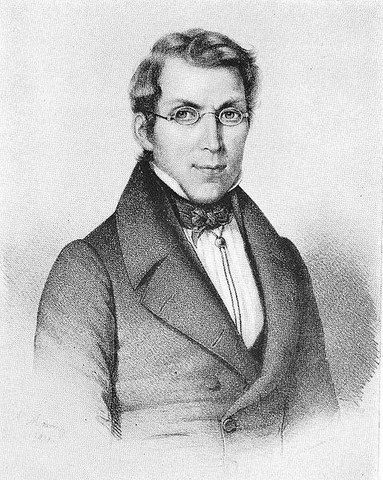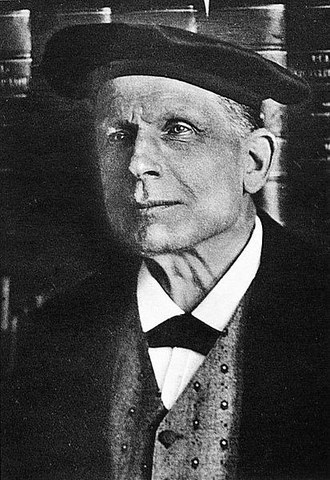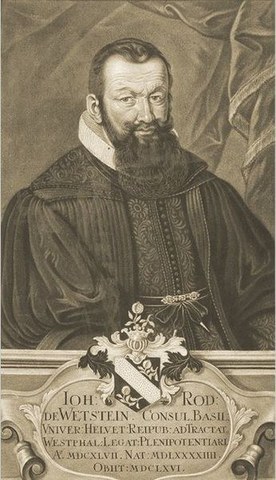Humanities scholars
Johann Jakob Bachofen (1815-1887)
Nonetheless, Bachofen's work is a foundational pillar of matriarchal research and in its time it initiated the debate on the socio-historical role of women.
Jacob Burckhardt (1818-1897)
Jacob Burckhardt attended Gymnasium am Münsterplatz from 1829 to 1836.
He was teacher at the Pädagogium (Upper Secondary level) from 1848 onwards.
- The Culture of the Renaissance
- Cicerone
- Cultural History of Greece
- Considerations on World History
Carl Gustav Jung (1875-1961)
High School Graduation in 1895 at 'Gymnasium auf Burg' (today Gymnasium am Münsterplatz).
Doctor and psychologist, one of the founders of depth psychology. His terms such as animus, anima, archetype became common through his writings. The so-called Travistock Lectures he held in London on the foundations of analytical psychology became famous.
Main works:
- Typology
- Soul problems of the present times
- Psychology and Religion
- On the Psychology of Dementia praecox
Friedrich Nietzsche (1844-1900)
He was appointed to the University of Basel and the Pädagogium (Upper Secondary level) at Gymnasium auf Burg at the age of 25. Ten years later, he resigned for health reasons and moved South. He lived in Sils Maria, in northern Italy and on the Riviera. Nietzsche became known as a poet and philosopher. With his rational critique, that held nothing sacred, he brought a new approach to philosophy which ultimately led to nihilism ('God is dead'). Nietsche replaced the person driven by christian pity by a new, strong, rational (super) man (Übermensch). He sought an ethics beyond good and evil. The philosophy of the 20th century was strongly influenced by him, especially existentialism.
Main works:
- The Birth of Tragedy (1872)
- Untimely Meditations (1876)
- Human, All Too Human (1878)
- Thus Spoke Zarathustra (1883)
- Beyond Good and Evil (1886)
Carl Spitteler (1845-1924)
After graduating from the Humanistisches Gymnasium (today Gymnasium am Münsterplatz), were he was strongly influenced by his teacher Jacob Burckhardt, he studied Law and Theology. Once he had finished his studies, however, he worked mainly as a teacher and journalist, e.g.. in Russia and Finland, later as a freelance writer in Lucerne, Switzerland. In his poetry, Spitteler created a world of mythical-cosmic figures inspired by Greek mythology. In 1919 he was awarded the Nobel Prize for Literature. In his speech 'Our Swiss Point of View', held at the New Helvetic Society on 14.12.1914, he distanced himself clearly from the German invasion policy and thus influenced large circles in Switzerland.
Main works:
- Prometheus und Epimetheus (1880)
- Die Mädchenfeinde (1890); (Two Little Misogynists, 1907)
- Der olympische Frühling (1910)
- Prometheus der Dulder (1923); (Prometheus the Suffering, 1924)
Thomas Platter (1499-1582)
Thomas Platter can rightly be regarded as the actual new founder of the Latin School on Münsterplatz.
In his more than 30 years of activity as Principal from 1544-1578, he placed the Münster School on a solid new base. By contrast, the separation form the church and the founding of the first laic municipal high school was little more than an administrative act. Thomas Platter has become a symbol of sixteenth-century humanism north of the Alps. His autobiography, which he worte in German at a very old age, contributed decisively to his Reputation since it affected its time in the same way Augustine's "Confessions" did to Late Antiquity. The shepherd boy from Grächen in the Canton Valais, who lost his father early and grew up in great poverty, travelled stalking and begging across Europe (Germany, Poland). It was only later when he learned to read and write as well as ropeworks. He had to study in the nighttime: Hebrew, Greek, Latin. He wanted to participate in the ongoing debates about the Reformation.
He moved from Zürich to Basel, where in addition to his teaching, he also ran a printing house. Amongst other important books, he was the first in printing.the 'Christianae religionis institutio' of Calvin in 1536. His wife contributed to the Family income by hosting up to 40 boarders.
In 1544, Platter became Principal of the "Schule auf Burg" (today Gymnasium am Münsterplatz). He bought a house in the Freie Strasse, and later an estate just outside the city walls in the actual Gundeldingerstrasse 280, which he administered by himself.. The Thomas Platter House was stylishly restored in the 1970s.
Alexandre Vinet (1797-1847)
Alexandre Vinet was appointed to the Humanistisches Gymnasium at the Young age of 21 because of his publications and worked there as a teacher from 1819 to 1839 while he was also.preacher at the Eglise Française. He repeatedly rejected professorships for Literature or Theology.
He became known throughout Europe for his Chrestomathy, a reading book with important excerpts of French poetry, which was used until the mid-20th century.
In his late years he fought for the separation of church and state in the region of the Canton Vaud and wrote substantial treatises on theological, literary and cultural-historical issues. In Vaud, he has remained a well-known figure to this day.
Jacob Wackernagel (1853-1938)
Indo-European studies owe many ingenious discoveries to Jacob Wackernagel, the son of the equally famous Germanist Wilhelm Wackernagel (1806-1869). His work, however, doesn't go back to the early days of this science, when the most important results in comparative studies were made..
Wackernagel's main work is the unfinished Ancient Indian grammar. The most widespread papers were his "Lectures on Syntax", of which Peter von der Mühll said: "Grammar cannot be told in a more compelling, understandable and graceful way."
Albert Weitnauer (1916-1984)
After completing his studies in Law, he began his career in the federal administration. He was ambassador to various countries, stayed a long time in London and afterwards in Washington until in 19?? he was appointed Secretary of State.
He represented Switzerland in many important international organizations and signed the crucial trade agreements in the 70s and 80s.
Weitnauer was a highly educated humanist and great art collector.
Johann Rudolf Wettstein (1594-1666)
Johann Rudolf Wettstein attende from 1600 to 1608 the 'Schule auf Burg', today's Gymnasium am Münsterplatz. In 1645 he became mayor of the city of Basel. He was one of the most able politicians of his time. At the so-called 'Westphalian Peace Congress' in Münster and Osnabrück, which put an end to the terrible Thirty Yeras' War, Wettstein was the delegate of the Swiss Confederation. After a long, tenacious and skilful negotiation, Wettstein achieved the detachment of the Confederation from the Holy Roman Empire of the German Nation in 1648.
In 1998, Basel celebrated the 350th anniversary of Wettstein's treaty with an exhibition at the Historical Museum which also provided insights into various areas of life in the early 17th century.
The book of the exhibition: 'Wettstein - Switzerland and Europe 1648' Christoph Merian Verlag Basel. Price: Fr. 65.- 260 pages, 150 illustrations (mostly colored).



